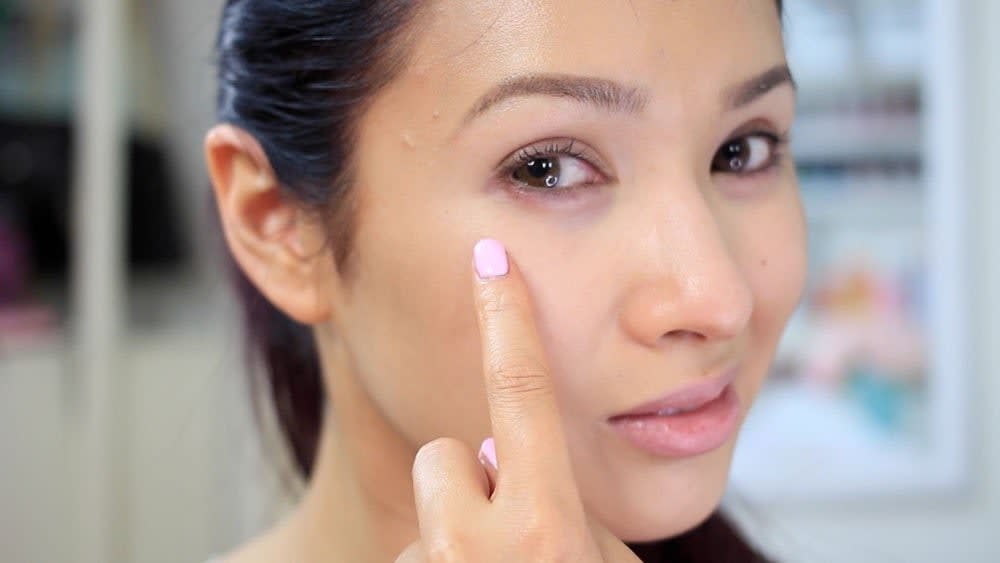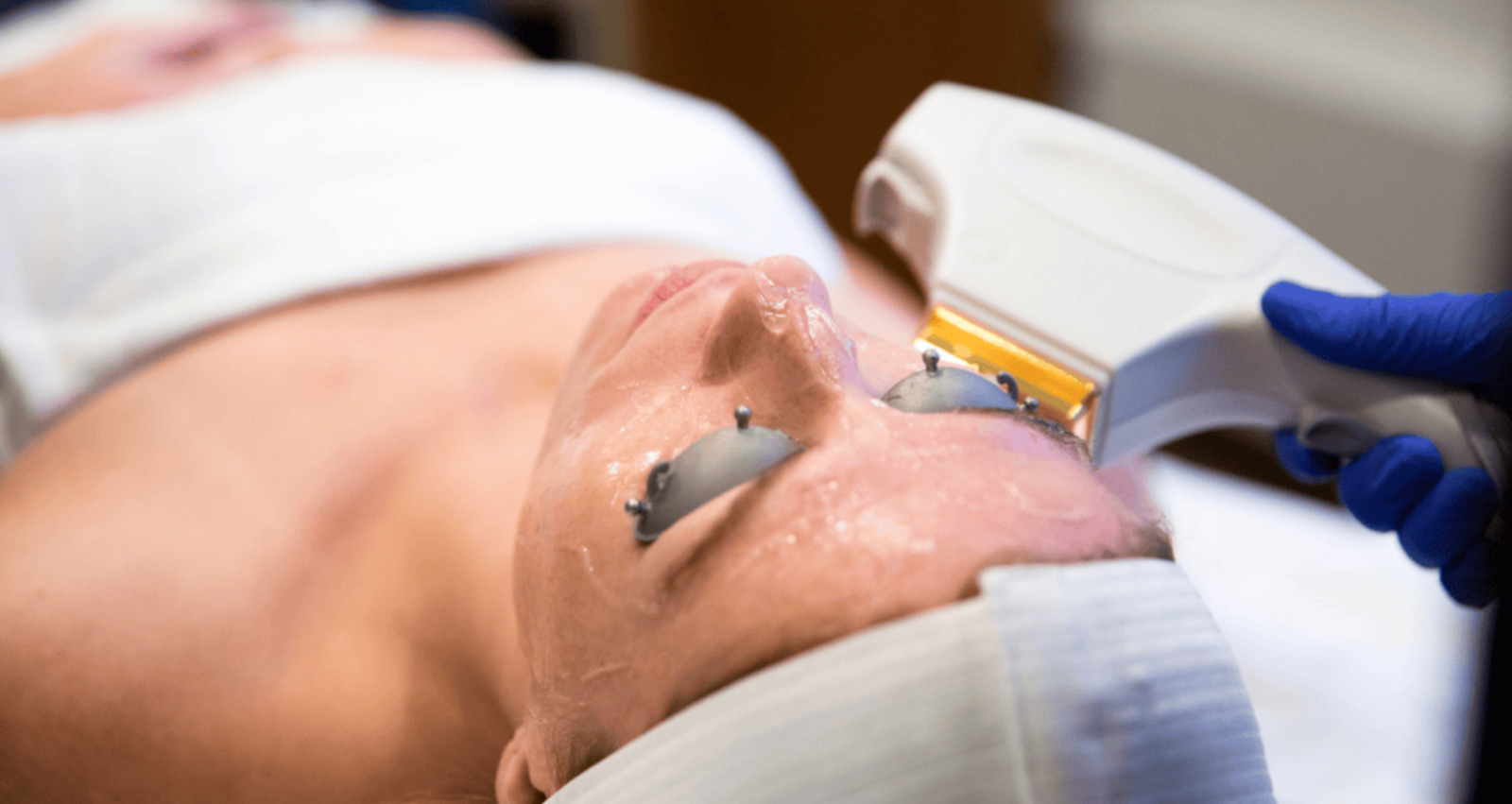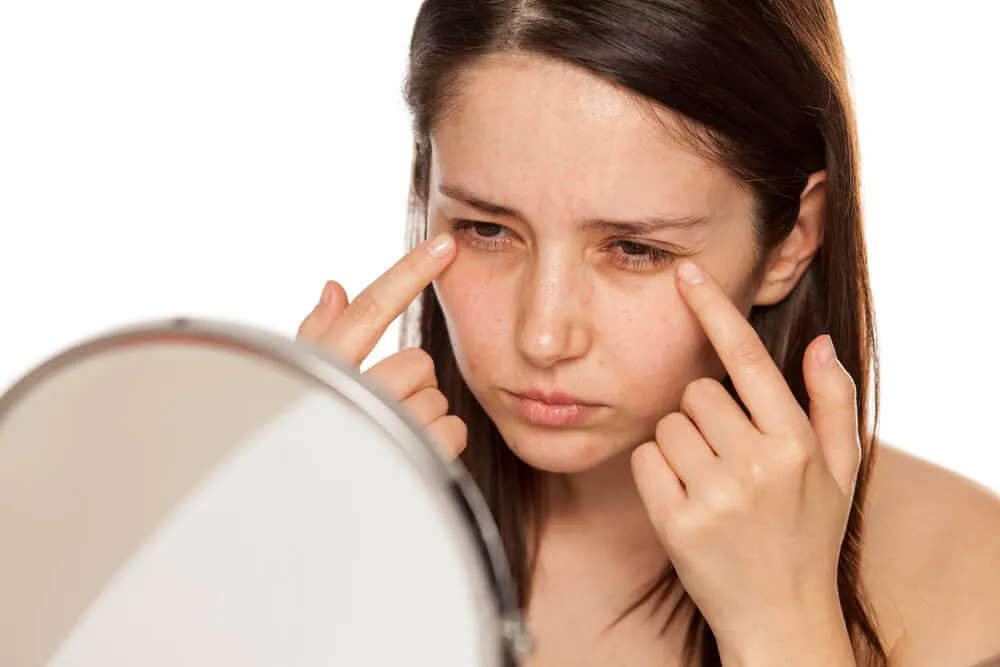When summer draws to a close, many people look in the mirror and notice that their under-eye area seems darker, more tired, and less refreshed than before. At first glance, it looks like stubborn dark circles that can’t be concealed no matter how much makeup you apply. However, not all dark shadows under the eyes are caused by genetics or lack of sleep—many are what dermatologists call “pseudo dark circles.”
This article explores how lifestyle habits and environmental stressors, especially late-night routines combined with prolonged UV exposure, can cause this condition. We’ll unpack the science behind pseudo dark circles, explore why summer intensifies the problem, and discuss how tailored aesthetic solutions—available at clinics like R·MEDYᴹᴰ Aesthetics—can help restore brightness and resilience to the delicate eye area.

1. What Are “Pseudo Dark Circles”?
Unlike true dark circles, which are often genetically determined (for example, naturally thin skin or deep tear troughs that cast shadows), pseudo dark circles arise from external and reversible causes. In other words, they are not permanent structural issues but rather temporary manifestations of environmental stress and lifestyle choices.
Key factors include:
- Pigmentation: Sun exposure stimulates melanocytes, leading to uneven melanin deposits around the eyes.
- Microvascular Congestion: Staying up late can cause sluggish circulation, making tiny capillaries under the thin eyelid skin more visible.
- Dehydration & Skin Barrier Weakness: Excessive screen time, alcohol, or lack of sleep reduces skin hydration, making under-eye skin appear dull and fragile.
- Inflammatory Stress: UV light and oxidative stress create chronic low-grade inflammation, worsening under-eye darkness.
The good news is that pseudo dark circles are manageable and reversible with the right combination of prevention and treatment.
2. Why Late Nights + UV Rays Are the Perfect Storm
Late Nights: Circulation and Recovery Interrupted
When you stay up past midnight, your body’s circadian rhythm is disrupted. The microcirculation that normally helps flush away metabolic waste slows down. Blood and lymph stagnate under the thin eyelid skin, creating a purplish or bluish tint. At the same time, insufficient deep sleep reduces collagen and elastin repair, leaving the skin around the eyes thinner and more fragile.
UV Rays: Pigment and Oxidative Stress Amplified
Meanwhile, prolonged summer sun exposure delivers its own assault. Even if you’re diligent with sunscreen on the cheeks and forehead, many people neglect the eye area. UV radiation not only increases melanin production (leading to brownish pigmentation) but also generates free radicals, accelerating collagen breakdown. The result? The skin appears both darker and more hollow.
The Double Hit: Why Summer’s End Is the Tipping Point
By the end of summer, these two forces combine: circulation-related purplish tones from late nights + pigment-related brown tones from UV = multifactorial pseudo dark circles. That’s why so many people suddenly notice their under-eyes look much worse as the season transitions into fall.
3. How to Tell If Yours Are “Pseudo” or “True”
Before seeking treatment, it’s important to determine what type of under-eye darkening you have:
- True Dark Circles (Structural/Genetic)
- Sunken tear troughs, hollowness casting shadows
- Runs in families
- Minimal improvement with lifestyle changes
- Pseudo Dark Circles (Lifestyle/Environmental)
- Worsen after late nights or heavy sun exposure
- Appear lighter with adequate rest and sun protection
- Often improve with non-invasive treatments
A trained aesthetic provider can easily distinguish the two and recommend the right approach.
4. Treatment Strategies: Tackling Pseudo Dark Circles
Managing pseudo dark circles effectively requires a multi-pronged approach—not a single magic bullet. At R·MEDYᴹᴰ, treatments are personalized, targeting the specific causes in each individual.

(1) Pigmentation Reduction
- Laser and Light Therapies: Devices such as BBL (BroadBand Light) and PicoWay help target melanin buildup safely in the delicate under-eye area, gradually lightening pigmentation without damaging surrounding tissue.
- Medical-grade Topicals: Ingredients like vitamin C, arbutin, and retinoids can suppress melanin activity and improve skin texture.
(2) Vascular Congestion Relief
- Energy-based Devices: Gentle resurfacing lasers or radiofrequency microneedling (e.g., Sylfirm X) can stimulate microcirculation and strengthen capillary walls.
- Lymphatic Drainage Therapies: Non-invasive modalities or even adjunctive manual massage techniques can enhance blood and lymph flow, reducing bluish tints.
(3) Skin Barrier & Hydration Restoration
- Injectable Skin Boosters (e.g., Introfill, Redensity 1): Deliver hyaluronic acid and nutrients directly to fragile under-eye skin, restoring plumpness and radiance.
- Hydrafacial or Oxygen-based Treatments: Improve hydration, remove surface dullness, and create a refreshed appearance.
(4) Oxidative Stress Defense
- Antioxidant Therapy: Intravenous vitamin drips (such as R·MEDYᴹᴰ’s Royal IV Drip) or topical antioxidant serums help neutralize free radicals.
- Hormonal & Nutritional Support: Since oxidative stress is systemic, broader wellness programs (hormone balancing, nutritional therapy) may be recommended for comprehensive improvement.
Together, these methods address pseudo dark circles from multiple angles—pigment, vascular, hydration, and oxidative stress—rather than just masking symptoms.
5. Prevention: Building Habits That Protect Your Eyes
Treatments can deliver impressive results, but prevention remains the cornerstone. A few simple but consistent habits make a lasting difference:
- Sun Protection for the Eyes: Apply mineral sunscreen around the eye contour (safe formulas are available) and wear sunglasses.
- Sleep Hygiene: Aim for 7–8 hours of high-quality sleep to support circulation and collagen repair.
- Screen Time Breaks: Reducing blue light exposure minimizes oxidative stress and eye strain.
- Hydration & Nutrition: Antioxidant-rich foods (berries, leafy greens, nuts) and sufficient water intake support skin resilience.
What sets R·MEDYᴹᴰ apart is not only its access to cutting-edge devices and treatments, but also its integrated philosophy:
- Personalized Assessments: Every patient’s pseudo dark circles may arise from different proportions of pigmentation, vascular, or hydration issues. R·MEDYᴹᴰ tailors solutions accordingly.
- Combination Protocols: Instead of relying on a single modality, treatments are often layered for synergistic results.
- Holistic Support: With offerings that span from injectables to IV nutrition and hormonal therapy, the clinic addresses both external and internal contributors to skin health.
- Safety First: The under-eye area is extremely delicate. Treatments are performed by highly trained providers using protocols that prioritize both safety and natural-looking results.

As summer ends, late nights and UV rays often leave behind more than just fond memories—they etch visible fatigue under our eyes. But pseudo dark circles are not a permanent burden. With the right blend of science-based treatments, preventive care, and personalized medical aesthetics, it’s possible to restore brightness and vitality to this delicate area.
At R·MEDYᴹᴰ, the goal is not only to improve how you look but also to support how you feel—refreshed, confident, and ready for the new season.
